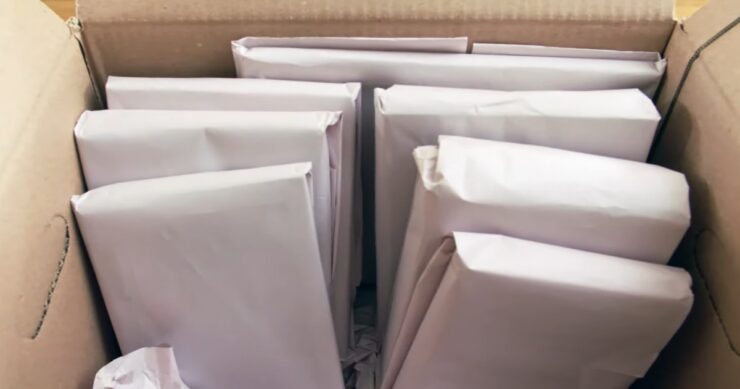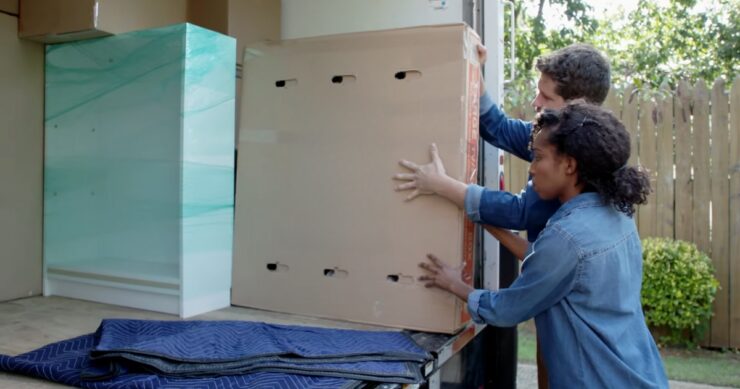Packing footage for a transfer requires cautious consideration to element to stop injury throughout transportation. Art work and framed photographs maintain sentimental and monetary worth, making their secure arrival at a brand new residence a precedence.
The method includes extra than simply wrapping objects in bubble wrap. It includes deciding on the appropriate supplies, using particular strategies, and understanding one of the simplest ways to safe this stuff for transit.
Additionally, you may all the time rent professionals that can assist you with the transferring course of. They’re skilled in packing issues safely. If you’re in search of one, try Straightforward Peasy Removals.
With the appropriate strategy, you may be certain that your footage face up to the bumps and jostles of transferring, arriving at their vacation spot in the identical situation they left.
This information presents sensible steps to attain that purpose, offering peace of thoughts as you transition to your new area.
Supplies Wanted for Packing Footage
To pack photographs correctly, you want particular supplies to make sure they’re protected. Begin with sturdy cardboard packing containers, ideally ones designed for paintings or mirrors.
Bubble wrap is important for cushioning, together with packing paper to wrap the images earlier than including the bubble wrap layer. Use painter’s tape to create an X over glass surfaces to stop shattering, and masking tape for securing the wrapping with out damaging the body.
Nook protectors are worthwhile for preserving body edges secure. Moreover, collect packing peanuts or foam blocks to fill empty areas within the packing containers, stopping motion.
A marker for labeling and a measuring tape to pick the appropriate field measurement are additionally mandatory. Accumulating these supplies earlier than you begin packing saves time and helps guarantee you’ve gotten every part wanted to guard your footage in the course of the transfer.
Step-by-Step Information to Wrapping Footage
Start by laying out a clear, flat floor to work on, like a desk coated with a blanket to stop scratches. Place packing paper on the floor, then lay the image face down on the paper.
Wrap the image with a number of layers of paper, securing it with masking tape. Subsequent, apply a layer of bubble wrap for added safety, making certain the bubbles face outward to stop marks on the image floor.
Safe the bubble wrap with tape. For photographs with glass, apply painter’s tape in an X form over the glass earlier than wrapping it to maintain the glass in place if it breaks. Use nook protectors on every nook of the body for additional safety.
This methodology ensures your footage are well-protected towards impacts and strain adjustments in the course of the transfer.
Select the Proper Field for Your Footage
Deciding on the proper field is essential for image security throughout transit. Measure your wrapped footage to discover a field that matches snugly, permitting minimal motion inside.
Specialty image or mirror packing containers, obtainable from transferring provide shops, provide the very best safety as they’re designed for flat, fragile objects. When you’ve got a number of small footage, take into account a bigger field with dividers to maintain them separated and forestall scratches.
Make sure the field is sturdy sufficient to resist the burden and strain from stacking. For extra-large or unusually formed footage, customized crates fabricated from wooden can present superior safety.
Fill any gaps within the field with packing peanuts or crumpled paper to immobilize the images, lowering the chance of injury.
Securing Footage Contained in the Transferring Field

Upon getting your photographs wrapped and the appropriate field chosen, the following step is securing them contained in the field to stop any motion that would trigger injury. Place the wrapped footage contained in the field, standing them vertically somewhat than laying them flat.
This place reduces the chance of strain injury. If there’s additional area, fill it with crumpled packing paper or foam blocks. These supplies take in shocks and preserve the images stationary.
For added safety, particularly with a number of footage in a single field, use cardboard dividers to separate every bit and forestall them from rubbing towards one another. Earlier than sealing the field, gently shake it to make sure there’s no motion inside.
Seal the field with sturdy packing tape, reinforcing the underside and high seams to deal with the burden throughout transport. Correctly securing your footage contained in the field is vital to making sure they arrive undamaged.
Labeling Containers Containing Footage
Labeling is a vital step within the packing course of, particularly for packing containers containing fragile objects like footage. Use a everlasting marker to jot down “FRAGILE – HANDLE WITH CARE” on either side of the field.
This alerts anybody dealing with the field to take action with additional warning. Moreover, point out the highest of the field to maintain it oriented appropriately in the course of the transfer. It’s useful to notice the room the place the field ought to go in your new residence, similar to “Residing Room – Footage,” to streamline the unpacking course of.
In case you’re utilizing a transferring firm, labels also can embrace an inventory of contents for stock functions and to say insurance coverage in case of injury. Correct labeling not solely protects your footage in the course of the transfer but additionally makes unpacking and organizing in your new residence extra environment friendly.
Ideas for Loading Footage onto a Transferring Truck

Loading footage onto a transferring truck requires a technique to keep away from injury. Place packing containers containing footage close to the again of the truck, towards the partitions, the place there may be much less motion and the chance of things falling on them is minimized.
Keep away from stacking heavy packing containers on high of these containing footage. As a substitute, discover a safe spot the place the field can stand upright, similar to between mattresses or furnishings that gained’t shift throughout transport.
If attainable, use straps or bungee cords to safe the packing containers towards the truck partitions for added stability. Be aware of temperature adjustments and moisture, particularly if the images are in transit for a very long time.
Keep away from inserting footage close to the truck door, the place they’re extra uncovered to outdoors situations. Correct placement and securing of your footage on the truck play an important function in making certain they arrive at your new residence with out injury.
Conclusion
Efficiently transferring footage requires cautious planning, the appropriate supplies, and a spotlight to element. By following a structured strategy, you may guarantee your footage are well-protected all through the transfer.
Every step, from wrapping to loading, performs an important function in safeguarding your objects towards injury. With these tips, you’re geared up to move your footage safely, prepared to brighten and personalize your new area.


